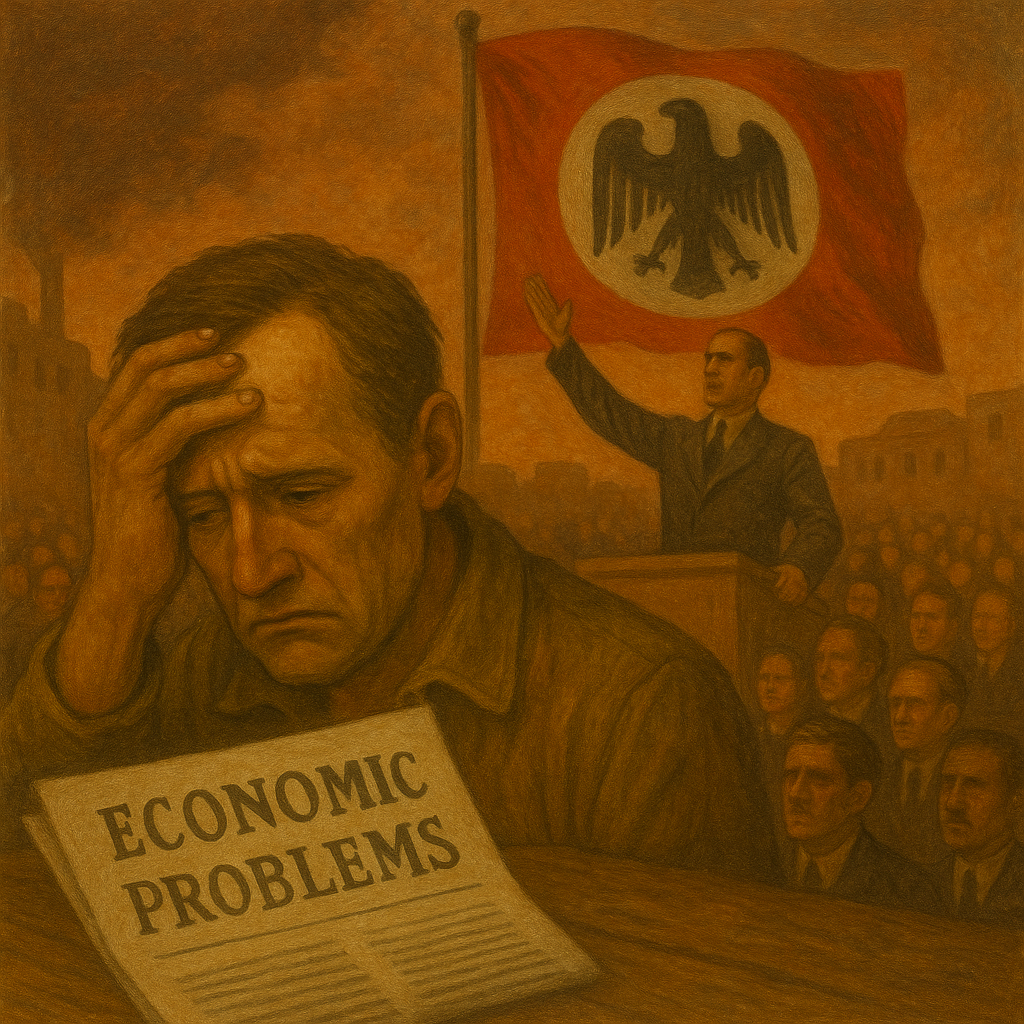Lesson 1: The Rise of Dictators (World War II)
🦅 Fascism in Europe
After World War I, many people in Europe were angry and afraid. Countries had economic problems, and people lost trust in democracy. Some leaders promised strength, pride, and power—but they also took away freedom. This is called fascism.
Mussolini’s Italy
In Italy, a man named Benito Mussolini promised to make the country strong again. He said, “Italy will return to the glory of the Roman Empire!” He wore military uniforms and created a group called the Blackshirts. They used violence to scare others.
In 1922, Mussolini and his supporters marched on Rome, and the king made him Prime Minister. Soon, he was a dictator.
🧠 Story: Mussolini made trains run on time—but only because people were too scared to complain.
Hitler and Nazi Germany
In Germany, the people were poor and angry after losing World War I. They had to pay a lot of money to other countries. Many Germans felt ashamed.
A man named Adolf Hitler said he could fix everything. He promised jobs, food, and pride. He blamed Jews and others for Germany’s problems.
Hitler led the Nazi Party. In 1933, he became Chancellor. Then, he took full control as a dictator.
💬 Hitler gave loud speeches and used radio and posters to spread his message. Children joined clubs like the Hitler Youth and learned to obey him.
❄️ Stalin’s Soviet Union
In Russia, things were also hard. People had suffered from war and hunger. A revolution in 1917 made Russia a communist country. Its leader was Joseph Stalin.
Stalin wanted full control. He made people farm for the government and sent anyone who disagreed to prison camps in Siberia, a very cold and faraway place.
❗ Millions of people died in famines or in the camps. Still, Stalin made the Soviet Union into a powerful country.
🧠 Story: A boy once said Stalin’s name in a joke. His whole family was taken away. People became afraid to speak freely.
🗾 Military Dominance in Japan
Japan wanted to become strong and respected like European countries. But Japan is small and has few natural resources. So the military leaders decided to take land from other countries.
In 1931, Japan invaded Manchuria in China. Later, in 1937, Japan started a full war with China.
⚔️ Story: The Japanese army was strong and feared. In the city of Nanjing, soldiers killed thousands of people in what is known as the Nanjing Massacre.
In Japan, the emperor was respected, but the military made the big decisions.
